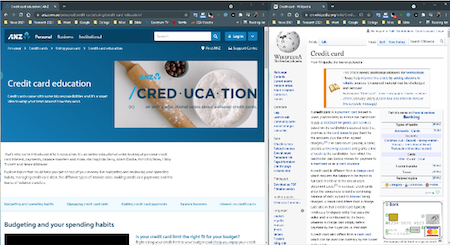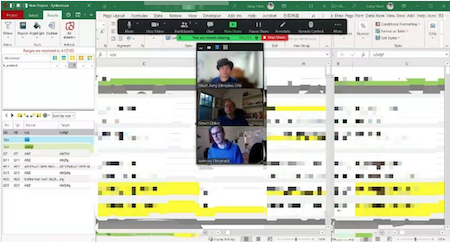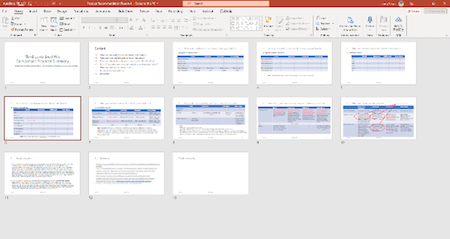How time flies. Over the past two months, I have experienced a period unique and meaningful to my entire college life, a CEA virtual internship working with a company based in a foreign country other than my home country, China, and current study-abroad country, the United States. For my second post as a CEA MOJO Blogger, I will describe my prior expectations for the internship, my entire experience throughout the duration of my program, and takeaways as well as reflections I gained after concluding my internship.
As an international student from China, I did not quite stay confident all the time on securing an internship abroad or work in the U.S. due to H-1B visa policy limitation, immigration policy restriction, and over-competition experienced among many international students currently in the U.S. Other considerations included my family's financial situation, American cultural illiteracy, or potential employment discrimination from the job market. However, my motive for returning to China does not feel competitively strong either, compared with choices for working in the U.S. or other foreign countries. First, there's a lack of potential professional networking resources in China. To me, this is the most crucial disadvantage – since studying abroad in the U.S. cannot necessarily provide me with a broad network of Chinese friends or professionals, although I have made contacts with quite a few Chinese people here through our similar cultural backgrounds and language familiarity. Also, other concerns for coming back to China as an overseas returnee include lack of professional knowledge on current Chinese social, economic, and political status quo, compared with my fellow friends currently studying in the top Chinese universities like Peking University. Western media often portrays China as an economic, military, political, diplomatic, or technological threat to their country’s interests with an incomplete view of the story being told and a biased perspective on China's current situation. These aspects may make it disadvantageous for me to come back as an overseas returnee for either seeking a job or conducting professional activities in my home country of China.
All these above considerations ultimately prompted me to intern abroad, and I finally secured a business-analyst internship in an Australian financial service company called Stay or Go under the joint assistance of both CEA Study Abroad and Internships Down Under.
Stay or Go is a small Australian financial service business of mainly 5-man executive board, focusing on providing customers with their best alternative credit card options through negotiating with their current banks, estimating their credit scores, analyzing their spending and saving behaviors, and searching for their next best credit card options inside the Australian lending market. Since at that time the company was moving from a pilot program to a full market launch, a business-analyst intern was needed to assist the company team with their datasets and website error-checking before launching the site into the full market. Therefore, after signing the contract with Stay or Go, my working plan basically incorporated five parts: learning and understanding of Australian lending market and credit card operation, learning and understanding of the company banking data sheets and its website, researching and locating the best third-party providers for Excel comparison tools workable on both Windows and MacOS systems, discussing rule setting ideas and researching ways of data rule validation implementation, and finally generating business performance reports after the market launch. However, due to time constraints, my main internship just included the first four parts of the work plan since on the last day of my internship, the company has just launched their website into full market operation, which I missed the chance to assist them for generating business performance reports.
My internship lasted for two months, from mid-June to mid-August. For the first two weeks, I was assigned to research what and how the Australian lending market operates. As a matter of fact, my self-independent online research covered most of my time here at Stay or Go. As an intern with no prior background in banking, my advice is to start learning by just getting embedded in this self-learning environment humbly and patiently. From my experience with online learning and researching, you need to critically filter out the information which seems irrelevant due to misinformation on the Internet. Based on my experience with online researching on Australian lending market, I primarily used two sites for learning: one is Australian government website-Parliament of Australia on Parliament Business, and the other is Wikipedia for general learning and reference. Due to the uniqueness on market learning, I chose the government site for trustworthy information, since government has a high role in central administration of business and economics here in Australia. As for Wikipedia, I used its information with carefulness and mindfulness due to its incomplete information verification or other issues like biases. Taking notes is also a great idea for self-learning, and I like to use the Microsoft software, OneNote, for note-taking with convenience and efficiency.
For my study of company data sheets, my daily stand-up meeting with my supervisor met this goal. By engaging in daily conversations with my supervisor, I managed to utilize what I learned from credit card markets and basics of credit card operation to exchange ideas with my supervisor to better understand data sheets’ parameters and data entry by asking questions for better clarifications. Through asking questions, I gained more insightful ideas on data transparency, security, banking business information maintenance, and data sources like Consumer Data Right in Australia (CDR) from my supervisor thanks to his decade-long experience in the banking and mortgage business. Due to confidentiality agreement with the company, I cannot share with you the complete overview of company data sheets, but I will make sensitive areas blurred of the below screenshot taken during my internship.
For the next two weeks, my main work focused on assisting with company banking data sheets. The primary need for data sheets concentrated on finding differences across different versions of data sheets, since employees would make changes to data sheets by updating and uploading their new version onto the company cloud space on a daily basis. Due to system compatibility consideration, I needed to search online and find several ways of analyzing data sheets’ differences using third-party tools compatibly working on both the Windows and MacOS systems. I encountered difficulties once again when researching online, so it proved there were not enough third-party options available on the Internet for me to write a recommendation report to the company. This was the first great challenge I faced during my first four weeks of the internship. I met with my supervisor and the CEO to discuss issues with the shortage of available online tools for the purpose of analyzing difference across data sheets. Their advice for me was to first find available options for either Windows or MacOS. Again, I turned to Internet for help. I was surprised to find four third-party tools for comparing Excel spreadsheets for differences on the Internet. To write a recommendation, I researched an online template version of simple recommendation report which includes problem description, solutions, recommendations, and executive approach. For my purpose of internship, I used a Microsoft PPT to incorporate all four parts of recommendation report elements into introducing my research results for the presentation in front of my supervisor and other company team members.
For my remaining weeks, my work with my supervisor and other company team members dealt with setting up rules and data validation processes to ensure existing and future data sheets were updated with accuracy, transparency, and reliability. So far, from my reflection, this was the hardest, most laborious work I had ever done during the entire internship. I had only been given a portion of banking data sheets due to company confidentiality and concerns over leaking. Inside this dataset, there are 7 tabs of different spreadsheets with each containing hundreds of rows and dozens of columns with specified names and meanings. Given the complexities and sophisticated interrelations between tabs inside the banking dataset, it took me nearly a week to figure out how they are interrelated as well as what data entry below columns means and their patterns for rule setting – such as text length (number of characters), format cell, or embedded Microsoft Excel formulas. After finalizing my initial thoughts on ideas for rule setting for each of column under two tabs that were assigned to me, I conducted multiple meetings first with my supervisor and later with both my supervisor and other team members to exchange ideas on rule settings. After two weeks of discussions through Zoom meetings with the company, I eventually wrote up an article summarizing all current agreed-upon ideas on rule setting for the banking dataset between me and the rest of team members. This file was later proven as a strong and crucial foundation for my last week’s rule implementation process as a reference. Rule implementation process was the hardest challenge and task that I had ever been assigned during my entire internship program. First, I did not know Excel functions or other programming languages like Python very well, which gave me an impossible mission to accomplish. At that moment, I really wanted to give up since there was only one week left and there was nothing that I could do to help with the company transitioning into the full market launch due to my lack of knowledge related to programming. However, at that moment, I also knew that my supervisor and other company team members were satisfied with my whole internship progress and outcomes, and they counted on me as their reliable source of help, which on the other hand I did not want them to look down on me. Therefore, under such circumstances, I tried my best to research and learn online about how to use Microsoft Excel built-in functions like =IF() to set up simple-to-understand functions to help the company set up rules of data validation through trial and error inside the banking datasheets. Through days of efforts undertaken in hours, I finally managed to find a way inside the Excel spreadsheets by using the feature ‘Data Validation Tool’ under tab ‘Data’ and inputting the formula I initially created for testing purpose inside the Data Validation Tool user-interface. It met both my expectations and company’s expectations as a result. On the last day of internship, I conducted a meeting that lasted over 2 hours with my supervisor on implementing those functions I created onto the real banking data sheets for data validation purposes. At the end of the day, I finally concluded with all my hard work in peace and satisfaction from myself and my supervisor.
As you can see, this is what I experienced through taking this business-analyst intern role at Stay or Go. Being strong, being curious, being proactive, being creative, being independent, being optimistic, and being critical will help you will succeed like I did. Don’t be afraid to have an internship for the first time like me. Always push yourself above your limits, and you will see how far you can actually go. I hope my experience will be helpful for you to learn – good luck!









